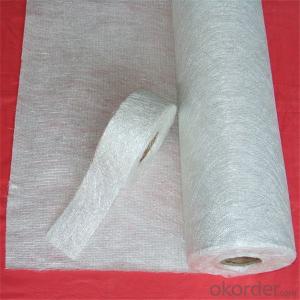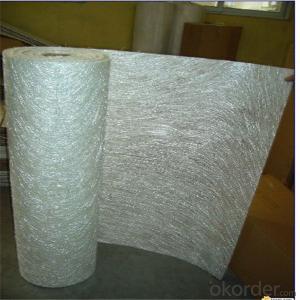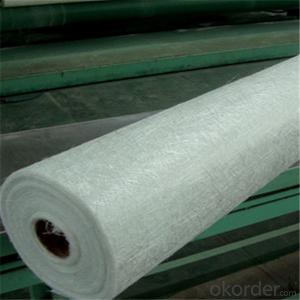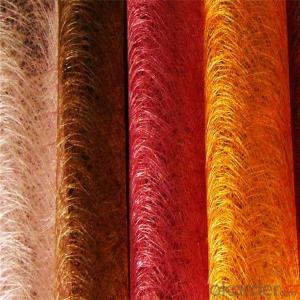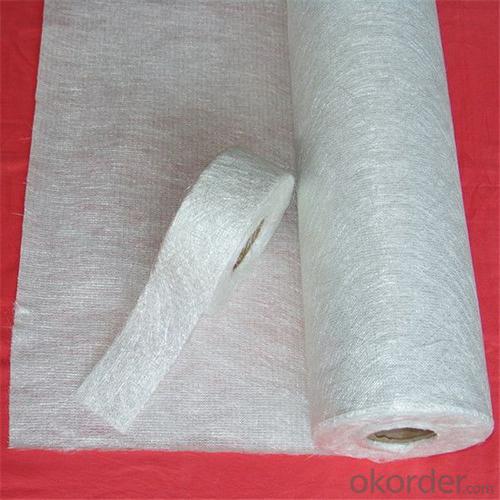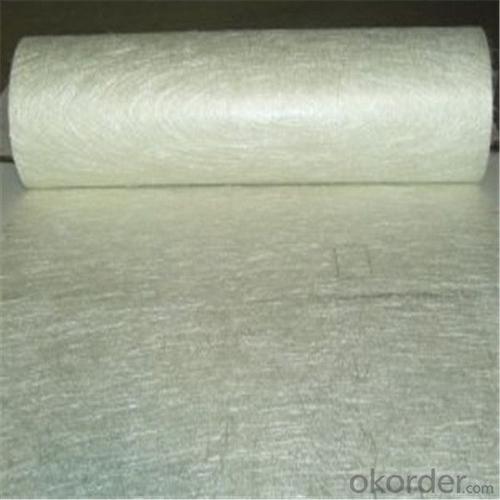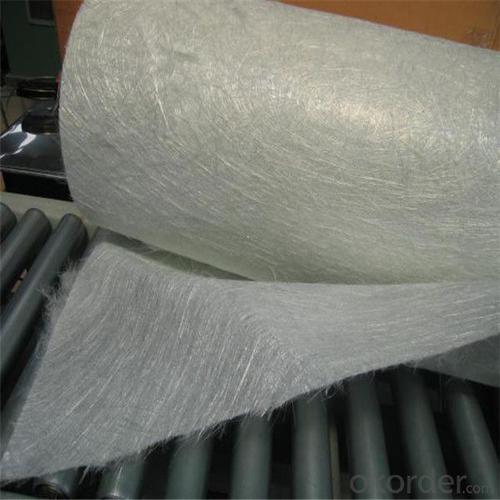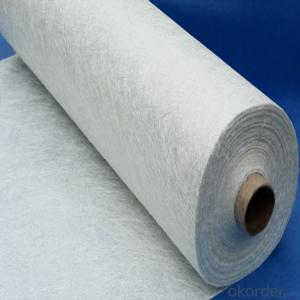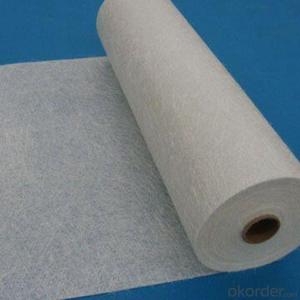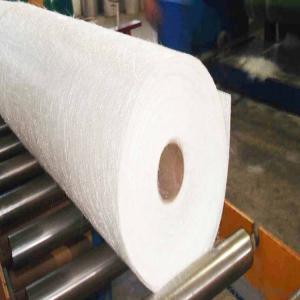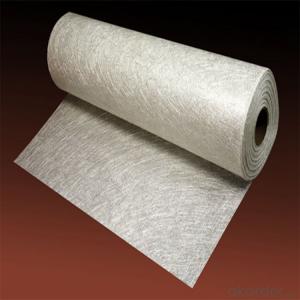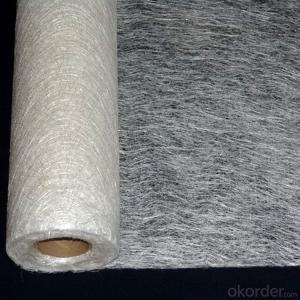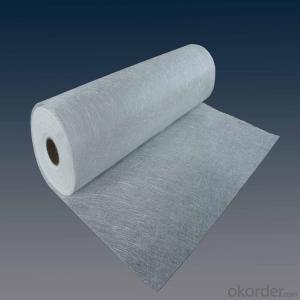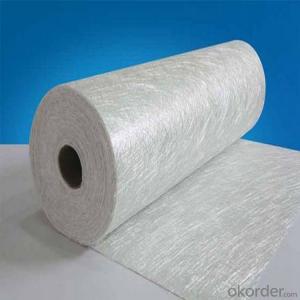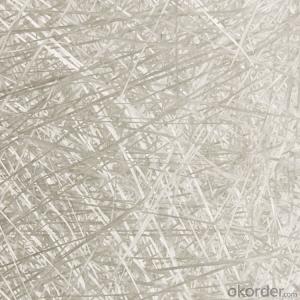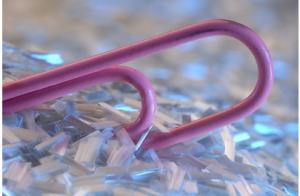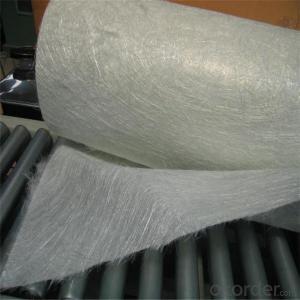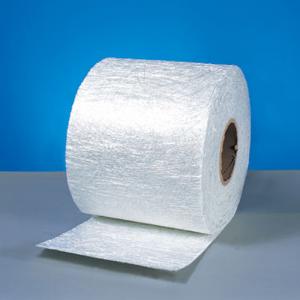Chop Strand Fiberglass for Epoxy Resin Easy Operation E-Glass Powder Chopped Stand Mats
- Loading Port:
- Tianjin
- Payment Terms:
- TT OR LC
- Min Order Qty:
- 100 m.t.
- Supply Capability:
- 20000 m.t./month
OKorder Service Pledge
OKorder Financial Service
You Might Also Like
Quick Details
| Technique: | Chopped Strand Fiberglass Mat (CSM) | Dimensions: | according to customer's request | Mat Type: | Stitch Bonding Chop Mat |
| Fiberglass Type: | E-Glass | Softness: | middle | Place of Origin: | Jiangxi, China (Mainland) |
| Brand Name: | cnbm | Model Number: | CSMEP100,CSMEP120,CSMEP200,etc | Product: | Cooling Tower Building Glass Fiber Fiberglass Chopped Strand Mat(csm) |
| Color: | White | Width: | 1040mm,1250mm,ect. | Area weight: | 225-900g/m2 |
| Application: | filament winding,panpel,ect |
Packaging & Delivery
| Packaging Details: | Each roll in one polybag then to an export carton. |
| Delivery Detail: | Within 18 days after confirm order |
Fiberglass Chopped strand mat
Powder Strand Mats Product Features:
1) Uniform density ensures consistent fiberglass content and mechanical properties of the composites products.
2)Uniform powder distribution ensures good mat integrity, little loose fibers and small roll diameter.
3) Excellent flexibility ensures good mold ability with no spring back at sharp angles.
4)Fast and consistent wet-out speed in resins and rapid air lease reduce resin consumption and production cost and enhances productivity and mechanical properties of the end products.
5)The composite products have high dry and wet tensile strength and good transparency.
Picture
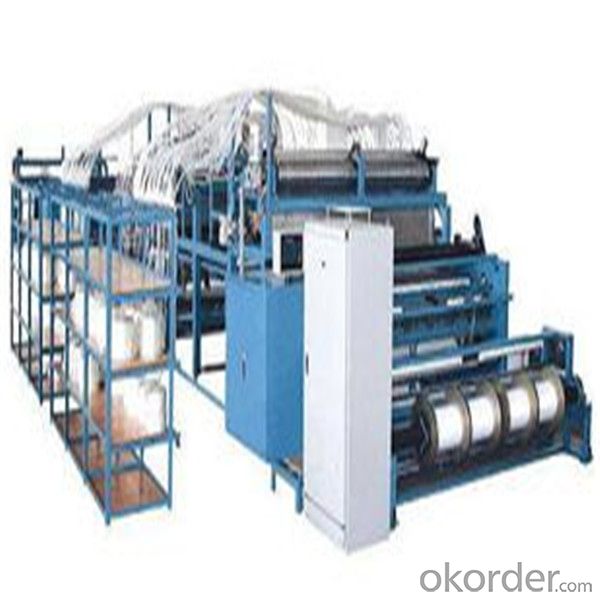
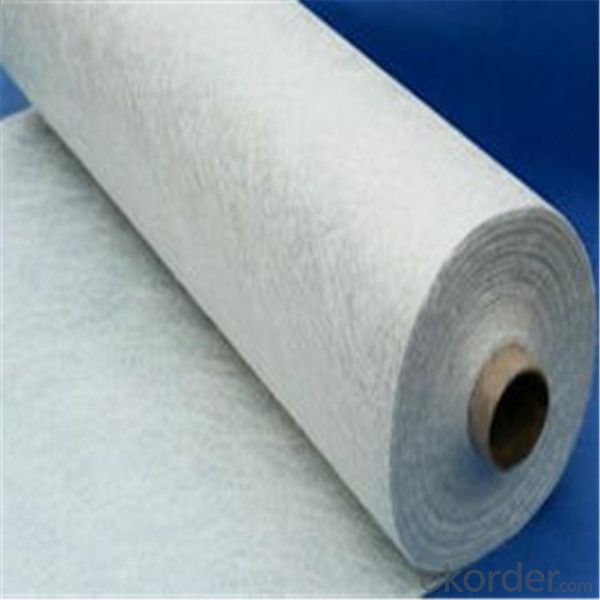
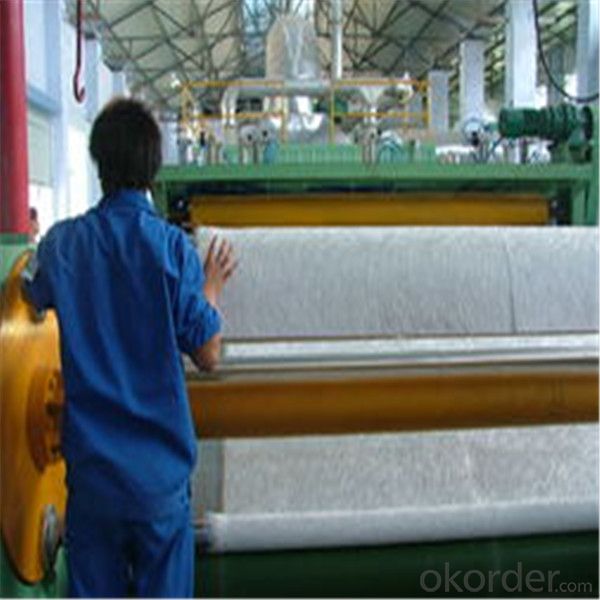
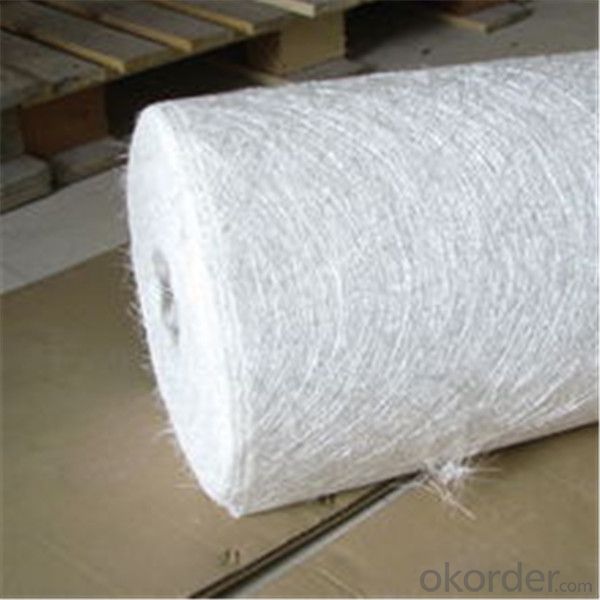
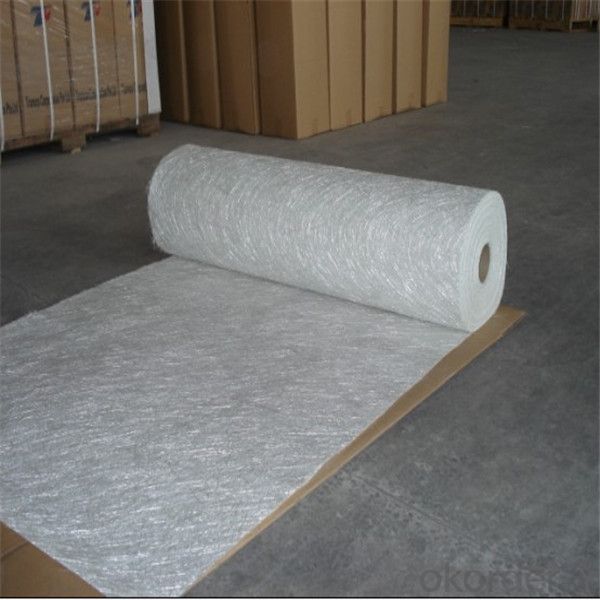
- Q: How does the fiber dispersion affect the surface finish of chopped strand composites?
- Fiber dispersion refers to the distribution and orientation of individual fibers within a composite material. In chopped strand composites, the fibers are randomly distributed and oriented in various directions. The level of fiber dispersion has a significant impact on the surface finish of the final composite product. When the fibers are well dispersed, meaning they are evenly distributed and oriented, the surface finish of the chopped strand composite tends to be smoother and more uniform. This is because the fibers are able to fill the resin matrix more effectively, resulting in a more homogeneous structure. The smooth surface finish is desirable for applications where aesthetics or smoothness is of importance, such as in automotive or consumer products. On the other hand, poor fiber dispersion leads to uneven distribution and orientation of fibers within the composite. This can create areas with high fiber concentration and other areas with low fiber concentration. As a result, the surface finish of the chopped strand composite becomes rougher and more irregular. The presence of fiber clusters or voids can also lead to surface defects such as pitting or waviness. In addition to affecting the surface finish, fiber dispersion also influences the mechanical properties of the composite. Well-dispersed fibers provide better reinforcement, leading to improved strength, stiffness, and impact resistance. On the contrary, poor fiber dispersion may result in weaker areas with reduced mechanical performance. To achieve a desired surface finish in chopped strand composites, it is important to ensure proper fiber dispersion during the manufacturing process. Techniques such as mechanical mixing, spray-up, or injection molding can be employed to enhance fiber dispersion and promote a smooth and uniform surface finish.
- Q: Does fiberglass chopped strand require any special surface treatment before use?
- Indeed, prior to utilization, fiberglass chopped strand necessitates a distinctive surface treatment. Generally, this treatment is executed to heighten the adherence between the fiberglass strands and the matrix material, such as resin. This process entails the application of a sizing or a coupling agent onto the strands, which aids in augmenting the adhesion and compatibility between the fiberglass and the matrix material. Additionally, the surface treatment serves to safeguard the strands against moisture absorption and enhances their manageability during processing. In summary, the specialized surface treatment is imperative for guaranteeing the utmost effectiveness and longevity of fiberglass chopped strand across diverse applications.
- Q: Is fiberglass chopped strand suitable for automotive interior components?
- Indeed, automotive interior components can be made suitable by the use of fiberglass chopped strand. Fiberglass, a versatile material, provides numerous advantages for automotive purposes. It possesses qualities such as being lightweight, robust, and having exceptional dimensional stability. These characteristics render it a fitting selection for a wide array of interior components, including door panels, dashboards, trim panels, and seat backs. Superior mechanical properties are the reason why fiberglass chopped strand is commonly employed in automotive interior components. These chopped strands are blended with a resin matrix, resulting in a composite material that can be shaped into diverse forms. Consequently, this enables intricate designs and customization options, catering to specific requirements within the automotive industry. Moreover, fiberglass showcases resistance against high temperatures, chemicals, and UV radiation, which are essential factors in the automotive sector. It can withstand elevated temperatures while maintaining its structural integrity, and it also remains unaffected by sunlight or chemical exposure, preventing fading or discoloration. Additionally, fiberglass chopped strand proves to be an economical choice for automotive interior components. It provides a cost-effective solution without compromising quality or performance. Its durability ensures long-lasting functionality, minimizing the need for frequent replacements and maintenance. To conclude, fiberglass chopped strand is undoubtedly an appropriate option for automotive interior components. Its lightweight nature, strength, dimensional stability, resistance to heat and chemicals, and cost-effectiveness all contribute to making it an ideal choice for various automotive applications.
- Q: What are the physical properties of fiberglass chopped strand?
- Fiberglass chopped strand is a type of reinforcing material that is commonly used in composite applications. It is made up of small strands of glass fibers that are cut into short lengths, typically ranging from 1/8 inch to 2 inches. One of the key physical properties of fiberglass chopped strand is its high tensile strength. The glass fibers used in its composition are known for their excellent strength-to-weight ratio, making them ideal for reinforcing materials. This high tensile strength allows fiberglass chopped strand to provide structural support and enhance the overall strength of composites. Another important physical property of fiberglass chopped strand is its resistance to corrosion and chemicals. The glass fibers used in its construction are non-reactive and do not degrade when exposed to various chemicals or environmental conditions. This makes fiberglass chopped strand suitable for applications where corrosion resistance is required, such as in marine or chemical industries. Additionally, fiberglass chopped strand exhibits good thermal stability. It has a high melting point and can withstand elevated temperatures without losing its structural integrity. This property makes it suitable for applications that involve exposure to high temperatures, such as in the automotive or aerospace industries. Fiberglass chopped strand also possesses excellent electrical insulation properties. The glass fibers used in its composition are non-conductive, meaning they do not allow the flow of electricity. This makes fiberglass chopped strand ideal for applications that require electrical insulation, such as in electrical enclosures or circuit boards. Lastly, fiberglass chopped strand is lightweight and has a low density. This property makes it advantageous in applications where weight reduction is desired, as it can help to improve fuel efficiency and overall performance. In summary, the physical properties of fiberglass chopped strand include high tensile strength, resistance to corrosion and chemicals, thermal stability, electrical insulation, and lightweight. These properties make it a versatile and widely used reinforcing material in various industries.
- Q: How is the electrical conductivity of fiberglass chopped strand determined?
- The electrical conductivity of fiberglass chopped strand is determined through various testing methods, such as resistivity measurements.
- Q: What are the compressive strength properties of fiberglass chopped strand?
- Various factors, including the type and quality of the fiberglass, the length and orientation of the strands, and the manufacturing process, influence the compressive strength properties of fiberglass chopped strand. However, overall, fiberglass chopped strand demonstrates excellent compressive strength. Fiberglass is renowned for its high strength-to-weight ratio, making it a favored option in industries that require lightweight yet resilient materials. The random arrangement of chopped strands in fiberglass enhances its compressive strength by enabling superior load distribution. The compressive strength of fiberglass chopped strand can vary from 300 MPa to 1,000 MPa (43,500 psi to 145,000 psi) depending on the specific composition and manufacturing technique. This puts it in the same league as many metals, such as aluminum, but with significantly less weight. To further enhance the compressive strength of fiberglass chopped strand, one can use higher-grade fiberglass materials, improve the manufacturing process, or incorporate additional reinforcement techniques such as resin impregnation or fiber alignment. It is essential to note that the compressive strength of fiberglass chopped strand may differ based on the specific application and intended use. Therefore, it is advisable to consult the manufacturer or conduct specific tests to determine the precise compressive strength properties for a particular fiberglass chopped strand product.
- Q: Can fiberglass chopped strand be used for ballistic protection?
- Fiberglass chopped strand can be used for ballistic protection to a certain extent. Fiberglass is a high-strength material that is known for its resistance to impact, making it suitable for applications such as bulletproof vests, armored vehicles, and protective helmets. However, it is important to note that fiberglass alone may not provide the same level of protection as other specialized ballistic materials like Kevlar or Dyneema. When used for ballistic protection, fiberglass chopped strand is typically combined with other materials, such as resin or aramid fibers, to enhance its strength and effectiveness. The combination of fiberglass with these materials creates a composite material that can effectively absorb and distribute the impact energy of ballistic threats. Moreover, the design and construction of the ballistic protection system play a crucial role in its effectiveness. Factors such as the number of layers, the orientation of the fibers, and the overall thickness of the composite structure should be carefully considered to ensure optimal protection. While fiberglass chopped strand can provide a certain level of ballistic protection, it is important to consult with experts in the field to determine the most appropriate materials and design for specific ballistic protection requirements.
- Q: Is fiberglass chopped strand resistant to chemicals?
- Yes, fiberglass chopped strand is generally resistant to a wide range of chemicals. It has excellent corrosion resistance properties and can withstand exposure to acids, alkalis, solvents, and other harsh chemicals without significant degradation or damage.
- Q: Is fiberglass chopped strand suitable for electrical grounding applications?
- No, fiberglass chopped strand is not suitable for electrical grounding applications. Fiberglass chopped strand is primarily used in the manufacturing of composite materials, such as reinforced plastics, and is not designed to conduct electricity. Electrical grounding requires materials with high electrical conductivity to safely discharge any potential electrical charges. Copper or other conductive materials are typically used for electrical grounding applications.
- Q: Is fiberglass chopped strand suitable for marine structural applications?
- Yes, fiberglass chopped strand is suitable for marine structural applications. It is a durable and corrosion-resistant material that can withstand the harsh marine environment, making it ideal for use in boat hulls, decks, and other structural components. Its high strength-to-weight ratio and excellent impact resistance also make it a popular choice in the marine industry.
Send your message to us
Chop Strand Fiberglass for Epoxy Resin Easy Operation E-Glass Powder Chopped Stand Mats
- Loading Port:
- Tianjin
- Payment Terms:
- TT OR LC
- Min Order Qty:
- 100 m.t.
- Supply Capability:
- 20000 m.t./month
OKorder Service Pledge
OKorder Financial Service
Similar products
Hot products
Hot Searches
Related keywords
